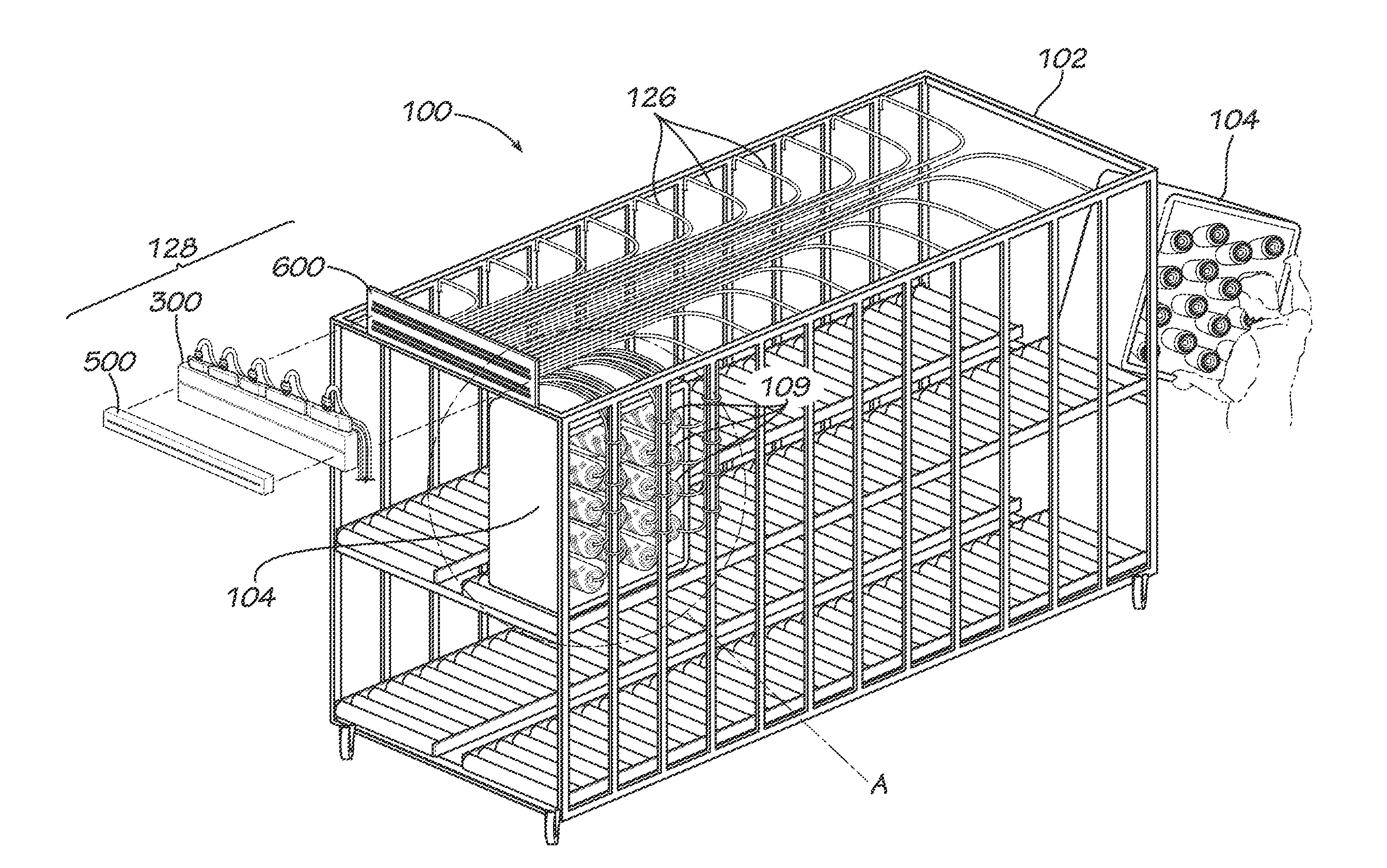Portable Creels With Insertable Yarn Trays and Improved Headers and Yarn Handling Methods
a technology of insertable yarn trays and portable creels, which is applied in the direction of weaving, manufacturing tools, and shuttles, can solve the problems of occupying large amounts of manufacturing facility floor space, requiring significant amount of labor to prepare each bobbin, and preparing and using creels to feed tufting machines and beams requires significant amount of labor, so as to reduce the downtime of tufting machines and other apparatuses, reduce the amount of yarn handling, and facilitate handling
- Summary
- Abstract
- Description
- Claims
- Application Information
AI Technical Summary
Benefits of technology
Problems solved by technology
Method used
Image
Examples
Embodiment Construction
[0045]Various innovations related to providing yarn for use on tufting machines and using yarn creels are disclosed herein. These innovations may be used in various combinations or separately. None of the features of any creel, header, or other component or any step of any process or method described herein should be considered essential or necessary to the disclosed invention. Rather this disclosure describes and enables various devices and methods that can include one or more of the various features presented herein to provide one or more of several possible benefits.
[0046]A. Frame for Holding Multiple Yarn Trays
[0047]Generally, disclosed below is a creel for feeding yarn from packages into a tufting machine FIG. 4 illustrates a creel 100 that includes a stationary header 600 positioned with respect to an intermediate header 300 and a detachable header 500. As described in detail below, the creel 100 utilizes a movable rack / frame 102 that receives a plurality of trays or container...
PUM
 Login to View More
Login to View More Abstract
Description
Claims
Application Information
 Login to View More
Login to View More - R&D
- Intellectual Property
- Life Sciences
- Materials
- Tech Scout
- Unparalleled Data Quality
- Higher Quality Content
- 60% Fewer Hallucinations
Browse by: Latest US Patents, China's latest patents, Technical Efficacy Thesaurus, Application Domain, Technology Topic, Popular Technical Reports.
© 2025 PatSnap. All rights reserved.Legal|Privacy policy|Modern Slavery Act Transparency Statement|Sitemap|About US| Contact US: help@patsnap.com



